Deep Learning
- Deep learning is a branch of machine learning that covers the set of algorithms that model complex patterns by feeding data through multiple non-linear transformations causing each level to capture a different level of abstraction.
- Deep learning algorithms seek to exploit the unknown structure in the input distribution.
- The word “learning” describes an automatic search process for better representation of the data.
- The key aspect of deep learning is that the layers of features are not designed by human engineers.
- A deep learning process can learn which features to optimally place in which level on its own.
- Most modern deep learning models are based on an ANNs.
Compared to AI and ML
- AI >> ML >> DL
- AI enables machines to mimic human intelligence, using logic and machine learning.
- ML is a subset of AI that enables machines to improve at tasks with experience.
- DL is a subset of ML that exposes multi-layered neural networks to vast amounts of data.
Rise of deep learning
- Deep learning is taking off due to a large amount of data available through:
- Digitization of the society
- Faster computation
- Innovation in the development of neural network algorithms
Previously, the labeled datasets were too small, the computers were too slow, the weights were initialized poorly, and the wrong type of non-linearity was used - Geoff Hinton
- Neural networks are extremely better than traditional methods because of the advances in hardware (mostly GPUs, now TPUs), and the exponential generation and accumulation of data.
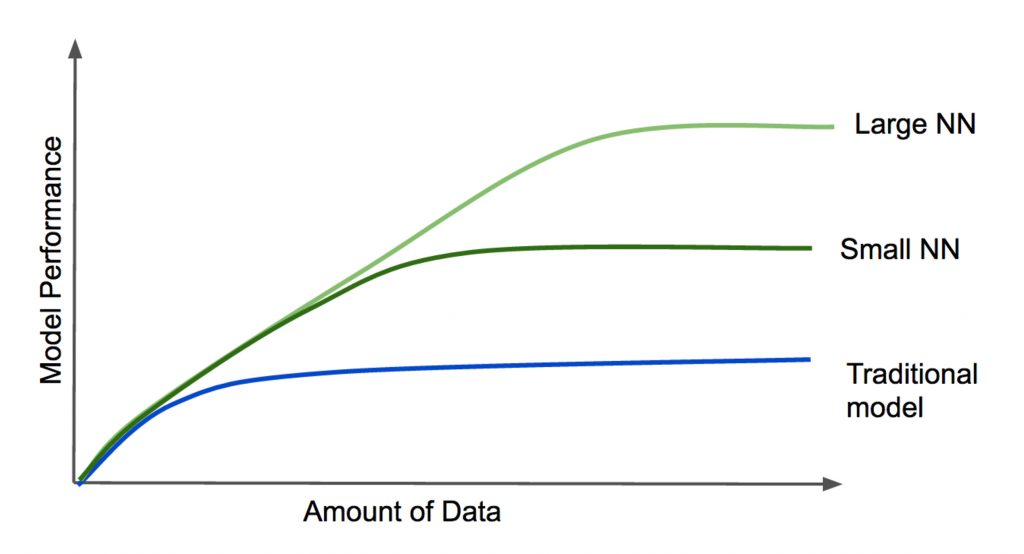
- Another reason that deep learning has taken off is because of important theoretical and algorithmic improvements, mainly in supervised learning.
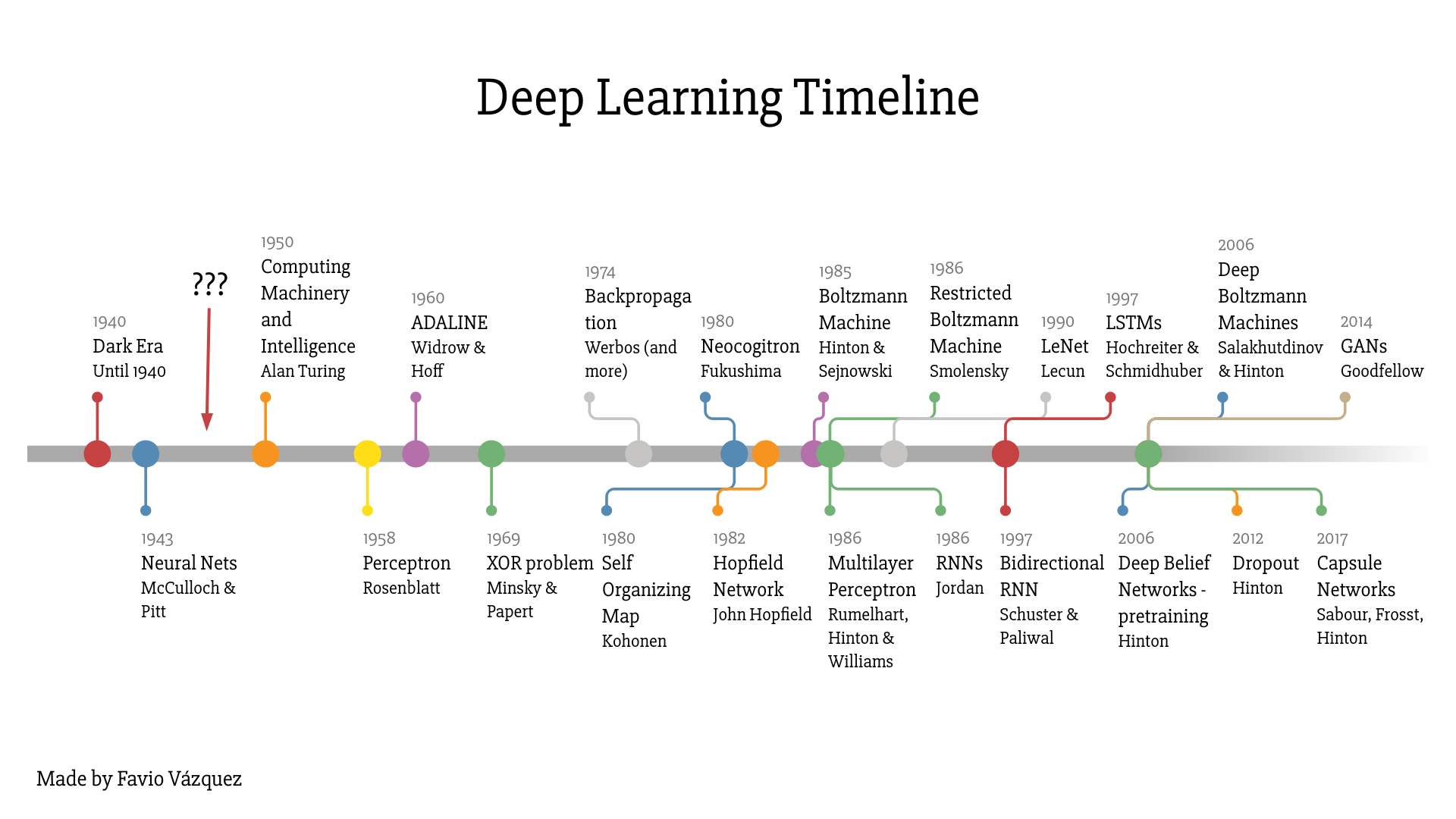
Hierarchical learning
- Deep learning is a class of ML algorithms that learn a hierarchical representation of the data.
- Each level learns to transform its input data into a slightly more abstract and composite representation.
- The most attractive thing about DL is that it is motivated by the way the world works:
- The world is compositional, atoms form molecules, and molecules form organisms.
- In literature we have letters->words->sentences->paragraph, just as in vision we have pixels->edges->parts->objects.
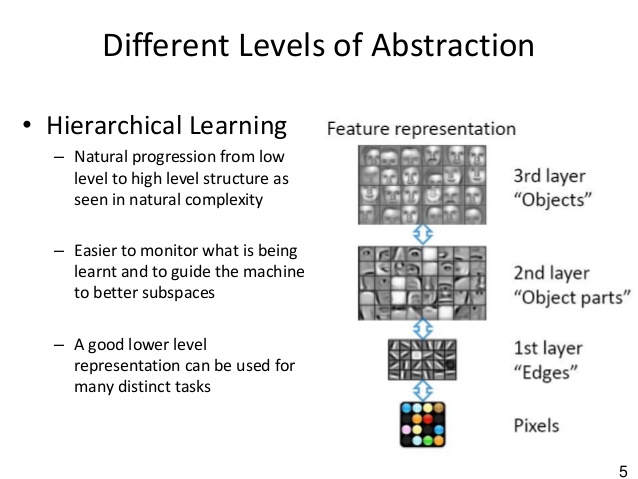
Deep neural networks
- Neural networks have individual units (neurons) are connected in an directed acyclic graph (DAG).
- Deep NNs have more layers between input and output:
- This allows richer intermediate representations to be built.
- More of the feature engineering can be achieved by the algorithm itself.
- They generate compositional models where object is expressed as a layered composition of primitives.
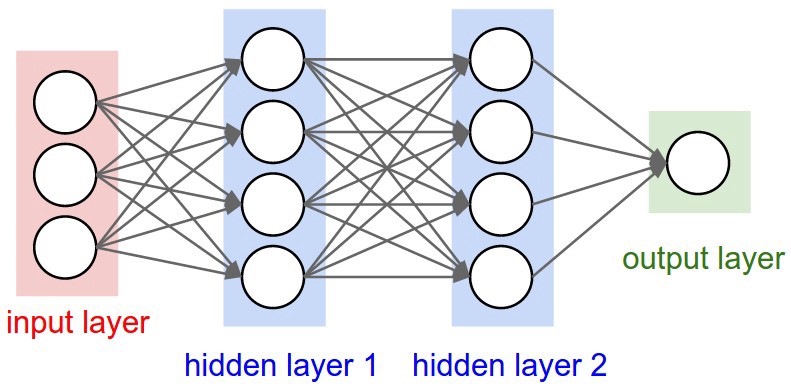
Universal function approximators
- NNs with at least one hidden layer are universal approximators:
- They can compute and learn any function at all.
- Almost any process we can think of can be represented as a functional computation in NNs.
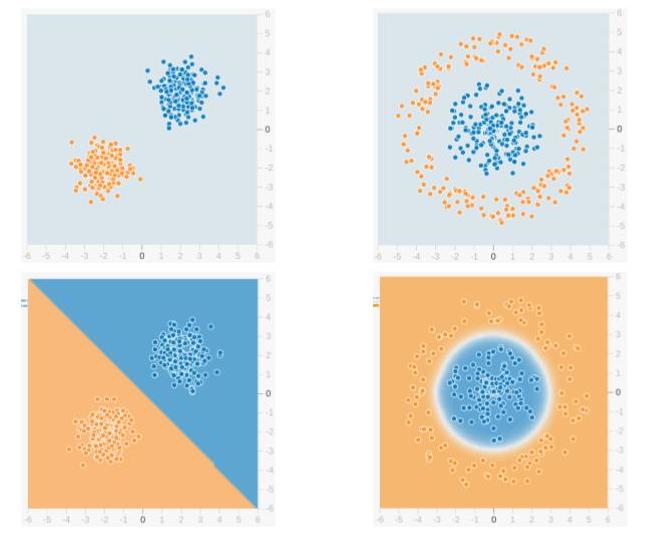
- The fact that deeper networks (with multiple hidden layers) can work better than a single-hidden-layer networks is an empirical observation, despite the fact that their representational power is equal.
- A visual proof that neural nets can compute any function
Pros
- Scalability of neural networks:
- Scales well to larger datasets with new GPU hardware and CUDA software.
- Results (usually) get better with more data and larger models.
- Ability to perform automatic feature extraction from raw data, also called feature learning.
- Relatively simple learning algorithm (SGD and backpropagation)
- Information such as in traditional programming is stored on the entire network, not on a database.
- The disappearance of a few pieces of information in one place does not prevent the network from functioning (think of brain damage)
- Parallel processing capabilities.
Cons
- DNNs are prone to overfitting because of the added layers of abstraction.
- This allows them to learn noise.
- Hard to interpret the model.
- They are a black boxes once they are trained.
- Don't perform as well on small data sets.
- The Bayesian approaches do have an advantage here.
- There is no specific rule for determining appropriate structure but through trial and error.
- They are computationally intensive to train:
- You need a lot of chips and a distributed run-time to train on very large datasets.
- Sometimes DL can be an overkill:
- Traditional ML algorithms still work for smaller problems with little data availability.
- Clustering still works for some unsupervised learning problems.
Biology
- Deep learning models are vaguely inspired by information processing and communication patterns in biological nervous systems.
- Yet they have various differences from the structural and functional properties of biological brains (especially human brains), which make them incompatible with neuroscience evidences.
- For example, there are many different types of neurons, each with different properties.
- The dendrites in biological neurons perform complex nonlinear computations.
- The synapses are not just a single weight, they’re a complex non-linear dynamical system.
- Dendritic Computation
- Nevertheless, the computations performed by deep learning units could be similar to those of actual neurons and neural populations.
- Similarly, the representations developed by deep learning models are similar to those measured in the primate visual system both at the single-unit and at the population levels.
- Other researchers have argued that unsupervised forms of deep learning, such as those based on hierarchical generative models and deep belief networks, may be closer to biological reality.
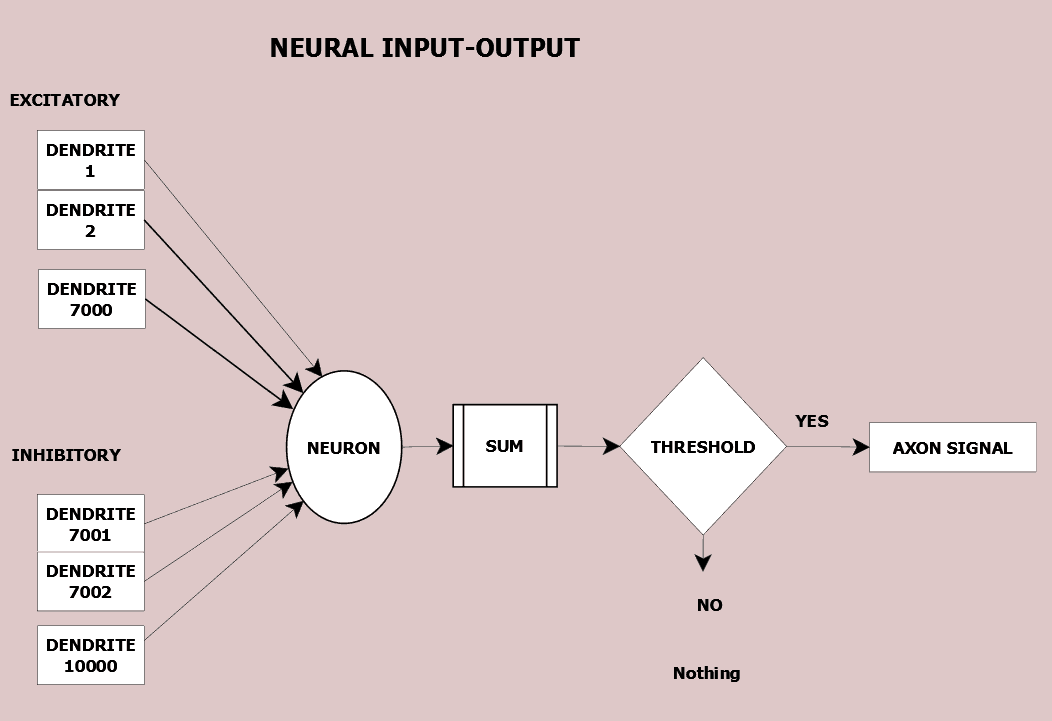
Architectures
- Modern state-of-the-art deep learning is focused on training deep (multi-layered) neural network models using the backpropagation algorithm.
- Most deep learning techniques are extensions or adaptions of ANNs.
- Different configurations are suitable for different machine learning tasks.
- AI Knowledge Map: how to classify AI technologies
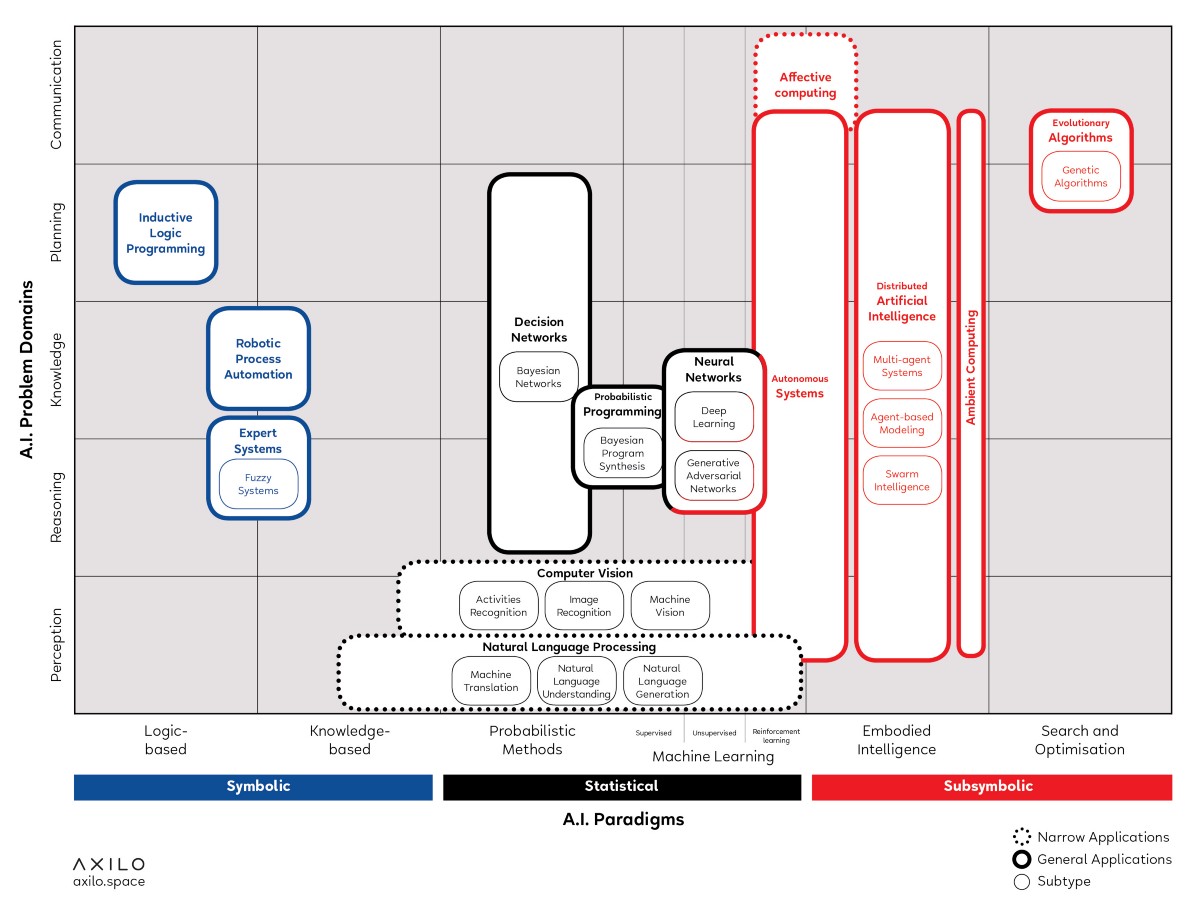
Challenges
- DL is a tool for perceptual classification, when general intelligence involves so much more.
- The biggest obstacle in terms of real A(G)I for the current wave of Deep Learning is almost total lack of abstract reasoning.
- Back-propagation has trouble generalizing outside a space of training examples.
- Therefore, current models cannot account for those cognitive phenomena that involve universals that can be freely extended to arbitrary cases.
- State-of-the-art DNNs perform image classification well but are still far from true object recognition.
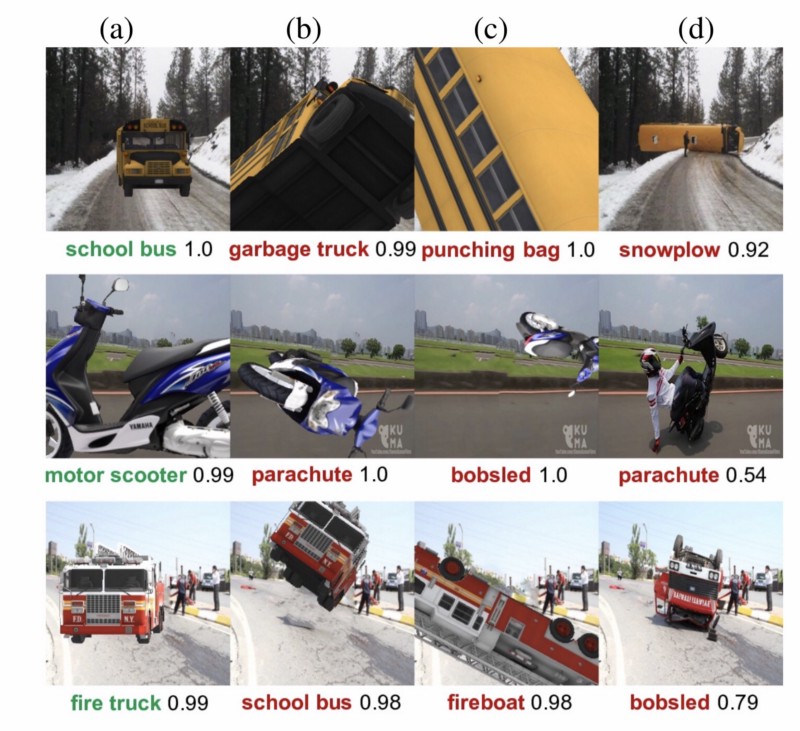
- RL: We are beginning to realize that there are major complexity problems with regards to the entire ML paradigm of specifying reward functions and optimizing based on these rewards.
- Deep learning is:
- Data hungry: Lacks a mechanism for learning abstractions through explicit, verbal definition, and works best when there are millions of training examples.
- Swallow: There is, so far, no good way to carry training from one set of circumstances to another.
- Not sufficiently transparent: The transparency issue, as yet unsolved, is a potential liability when using deep learning for problem domains like financial trades or medical diagnosis.
- Difficult to engineer: Engineering risks could be particularly problematic with deep learning given their statistical nature, opacity, and difficulty distinguishing causation from correlation.
- Deep Learning: A Critical Appraisal (2017)
- The deepest problem with deep learning
Future research
- Deep Learning is an active field of research:
- We are still searching for the best models, topology of the networks, best ways to optimize their hyperparameters and more.
- We should and will see more benefits coming from the unsupervised side of the tracks as the field matures to deal with the abundance of unlabeled data available.
- Unsupervised feature learning approaches, like Autoencoders, would automatically make conclusions from similar observations.
- Then manually labeling these conclusions can be practical, and this is the way curiosity of computers are satisfied.
- Deep learning and symbol-manipulation will co-exist:
- With deep learning handling many aspects of perceptual classification, but symbol-manipulation playing a vital role in reasoning about abstract knowledge.
- Gradient descent plus symbols, not gradient descent alone.
- Deep Reinforcement Learning is another future direction:
- The model behaves more like to a human by interacting with the noisy environment and making precise decisions upon given scalar reward value.
- Interpretation techniques for deep learning
- Bayesian deep learning
- Meta-learning will be the new SGD.
- Generative models will drive a new kind of modeling.